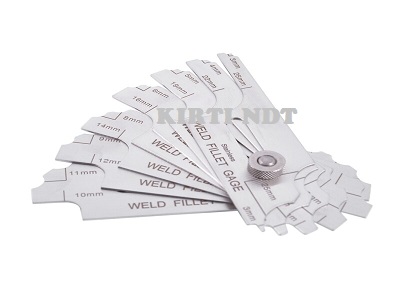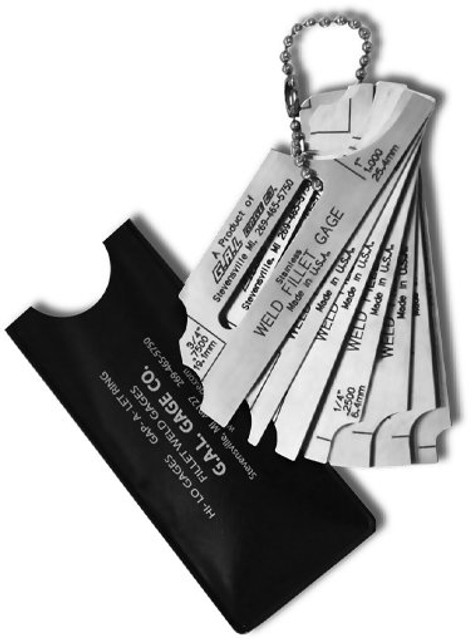Understanding Gauge Fillet Weld: A Comprehensive Guide for Welders
The Ultimate Overview to Fillet Weld Quality Control: Making Sure Toughness and Sturdiness in Your Welded Joints
In the world of welding, guaranteeing the stamina and durability of fillet welds is vital for the honesty of welded joints. The high quality control steps applied during the welding process can substantially influence the structural strength of the end product. From the selection of proper products to the thorough evaluation of welds, each step plays a critical role in identifying the general top quality of the weld joint. As we get started on this exploration of fillet weld quality assurance, we will discover important elements that affect weld toughness, explore effective evaluation techniques, and go over approaches for preventing common weld defects. Stay tuned to discover just how grasping these strategies can elevate the toughness and integrity of your bonded joints.
Value of Fillet Weld High Quality Control
Making sure appropriate fillet weld quality assurance is paramount in assuring the architectural stability and longevity of welded parts in different industries. Fillet welds are commonly made use of in architectural steelwork, bridges, pressure vessels, pipes, and various other vital infrastructure where the strength of the weld is critical to general safety and efficiency. Quality assurance steps such as aesthetic assessments, non-destructive testing, and adherence to welding treatments assist identify possible issues like absence of blend, incomplete penetration, damaging, or excessive support.
Secret Factors Influencing Weld Stamina
Achieving ideal weld strength calls for careful factor to consider of various vital aspects that affect the stability and durability of the bonded joint. The first vital element is correct joint preparation, which entails cleaning the base steels to remove any type of impurities that might damage the weld. Furthermore, the fit-up of the joint is vital to guarantee correct penetration and combination of the filler product.
The selection of the ideal welding technique and specifications additionally plays a significant function in determining weld stamina. Aspects such as heat input, travel rate, and electrode angle can influence the quality of the weld. Additionally, keeping the correct interpass temperature throughout multi-pass welding is crucial to stop fracturing and make sure a strong bond between the layers.
Moreover, the selection of filler product and its compatibility with the base metals is essential for accomplishing high weld stamina. Making use of filler product with the ideal mechanical residential or commercial properties can improve the general stability of the weld. Post-weld warm treatment and appropriate evaluation methods are vital steps in guaranteeing the stamina and sturdiness of the welded joint.
Evaluation Techniques for Weld Integrity

An additional critical assessment approach is liquid penetrant screening, where a fluid color is applied to the weld surface area - Gauge Fillet Weld. The dye seeps right into any surface-breaking flaws, making them visible under UV light. This technique is effective for finding defects that might not show up to the naked eye


Ultrasonic screening is additionally widely utilized for evaluating weld integrity. High-frequency noise waves are routed right into the weld, and any interruptions in the audio wave pattern show potential problems like fractures or absence of blend.
These inspection methods play a crucial duty in making certain the quality and reliability of welds, eventually adding to the total toughness and durability of welded joints in industrial settings.
Avoiding Typical Weld Flaws
In order to keep the architectural honesty of bonded joints in commercial applications, it is crucial to implement safety nets to deal with typical weld problems. One typical flaw is lack of combination, where the filler material stops working to bond sufficiently with the base metals, causing weak areas in the weld. This can be stopped by making sure appropriate warm control and using the appropriate welding technique.
Another constant concern is porosity, triggered by gas entrapment in the weld steel during the welding process. To stop this, it is essential to cleanse the base steels completely, utilize dry electrodes, and maintain an ideal welding setting with appropriate ventilation.
Additionally, splits in welds can endanger the joint's stamina. To avoid this defect, it is essential to manage the cooling rate after welding, make use of pre-heating when required, and select ideal welding specifications.
Enhancing Weld Durability With Correct Methods
To bolster the long life and dependability of welded frameworks, utilizing advanced welding strategies is crucial. One important method to boost weld sturdiness is to ensure correct weld bead positioning. By positioning the weld grain precisely within the joint, the weld's toughness and resistance to tiredness can be significantly boosted. Additionally, making use of the appropriate welding criteria, such as voltage, present, and take a trip speed, is crucial for accomplishing a sturdy weld. These specifications straight impact the weld's infiltration, fusion, and general top quality, adding to its long life.
Furthermore, utilizing ideal pre-weld and post-weld heat treatments can aid reduce residual anxieties and enhance the weld's toughness, making it more immune to cracking and failure gradually. An additional technique to enhance weld toughness is to make use of high-quality welding consumables and base materials. Selecting the ideal filler steel and ensuring the sanitation of the base steels can prevent additions and various other flaws that can endanger the weld's resilience. By executing these appropriate methods, welders can make certain that their bonded joints show exceptional strength and resilience, satisfying the best requirements.
Final Thought
Finally, preserving high quality control standards for fillet welds is critical for making certain the toughness and sturdiness of welded joints. By understanding the vital variables impacting weld strength, making use of examination techniques for weld integrity, preventing usual weld problems, and using appropriate techniques, welders can boost the general resilience of their welds. It is important to focus on high quality control steps to click here now generate trustworthy news and lasting welded joints.
In the world of welding, guaranteeing the strength and toughness of fillet welds is critical for the honesty of welded joints. As we get started on this exploration of fillet weld high quality control, we will uncover essential aspects that influence weld stamina, dive into reliable evaluation approaches, and talk about approaches for avoiding usual weld defects.Accomplishing optimal weld stamina calls for careful factor to consider of numerous essential variables that influence the stability and longevity of the welded my blog joint (Gauge Fillet Weld).In final thought, maintaining high quality control requirements for fillet welds is crucial for guaranteeing the toughness and durability of welded joints. By recognizing the key elements impacting weld toughness, utilizing evaluation techniques for weld honesty, preventing typical weld flaws, and using proper techniques, welders can improve the general longevity of their welds